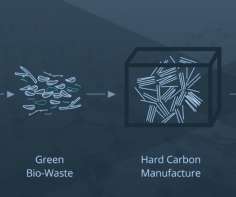RAL proposes new efficient and low-cost process to crack ammonia for hydrogen using sodium amide; transportation applications
Green Car Congress
JUNE 23, 2014
RAL researchers are proposing a new process for the decomposition of ammonia to release hydrogen that involves the stoichiometric decomposition and formation of sodium amide from Na metal. Indeed, high-density, affordable, and efficient hydrogen storage is one of the key steps in the realization of a hydrogen-based energy sector.






















Let's personalize your content